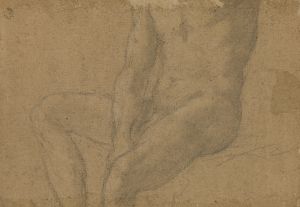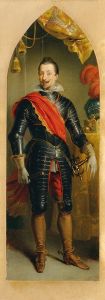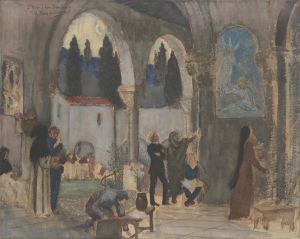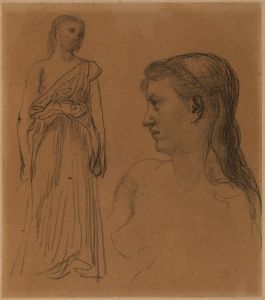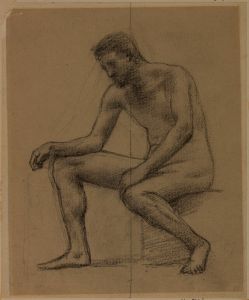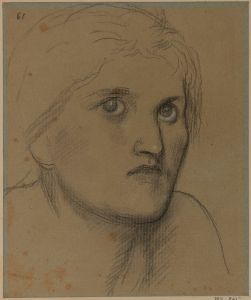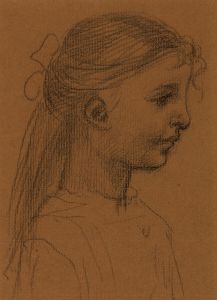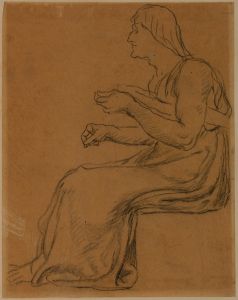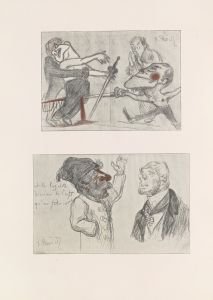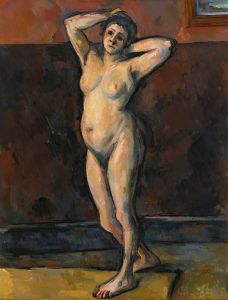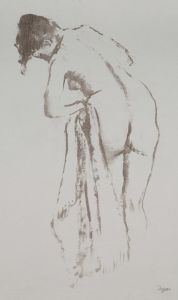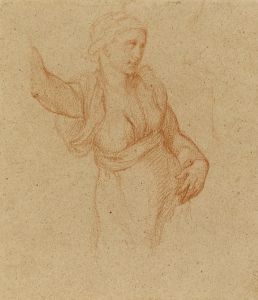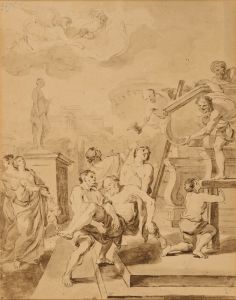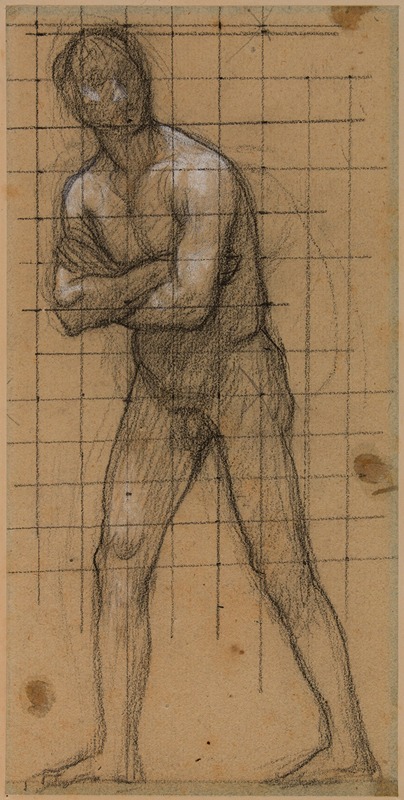
Homme nu, debout, bras croisés
A hand-painted replica of Pierre Puvis de Chavannes’s masterpiece Homme nu, debout, bras croisés, meticulously crafted by professional artists to capture the true essence of the original. Each piece is created with museum-quality canvas and rare mineral pigments, carefully painted by experienced artists with delicate brushstrokes and rich, layered colors to perfectly recreate the texture of the original artwork. Unlike machine-printed reproductions, this hand-painted version brings the painting to life, infused with the artist’s emotions and skill in every stroke. Whether for personal collection or home decoration, it instantly elevates the artistic atmosphere of any space.
Pierre Puvis de Chavannes' Homme nu, debout, bras croisés (translated as Nude Man, Standing, Arms Crossed) is a study of the male nude created by the French painter during the 19th century. Puvis de Chavannes, known for his large-scale murals and allegorical works, often created preparatory studies and sketches to refine his understanding of anatomy, composition, and form. This particular work exemplifies his focus on the human figure and his ability to render the body with a sense of balance and simplicity.
The painting or drawing depicts a nude male figure standing upright with his arms crossed over his chest. The pose is static yet conveys a sense of introspection and calm. The figure is rendered with attention to anatomical accuracy, though the style leans toward idealization rather than strict realism. This approach aligns with Puvis de Chavannes' broader artistic philosophy, which often sought to evoke timelessness and universality in his works.
Homme nu, debout, bras croisés is believed to have been a study rather than a finished piece intended for public display. Such studies were common in Puvis de Chavannes' practice, as he frequently used them to prepare for larger compositions, particularly his murals. These preparatory works allowed him to experiment with poses, proportions, and the interplay of light and shadow on the human form.
Puvis de Chavannes was a prominent figure in the French art world during the late 19th century. He is best known for his murals in public buildings, including the Panthéon in Paris and the Boston Public Library in the United States. His style, characterized by muted colors, simplified forms, and a sense of serenity, influenced later artists, including the Symbolists and early modernists. While his large-scale works often featured allegorical or mythological themes, his studies of the human figure, such as Homme nu, debout, bras croisés, reveal his dedication to mastering the fundamentals of art.
The exact date of creation for Homme nu, debout, bras croisés is not definitively documented, but it likely falls within the period of Puvis de Chavannes' mature career, when he was actively producing preparatory studies for his major projects. The medium of the work—whether oil on canvas, charcoal, or another material—varies depending on the specific version or reproduction, as Puvis often worked in multiple formats.
This piece is an example of Puvis de Chavannes' commitment to classical traditions while also paving the way for modern interpretations of the human form. It reflects his ability to balance technical skill with an overarching sense of harmony and emotional resonance.





